Direct from Mexico: curanderos, yerberos, parteras, sobadores, and a few more
In Mexico, alternative medicine has long been popular. With the increase of healthcare costs, insurance, traditional medicines and a visit to the doctor’s office in the U.S., many people are seeking alternative means to treat ailments, both physical and mental. “In most cases with non-traditional treatment, there is no language barrier, no need for an appointment and, frequently, no necessity to travel great distances “(Torres 12). There is also no need for medical insurance or the use of complicated forms that may or may not be available in the patient’s first language.
This work will examine some alternatives found in Amarillo, Texas, and look at the different forms of alternative medical care available and utilized not only by the Hispanic community, but — in increasing numbers — the non-Hispanic community. It will also establish a link to non-traditional medicine and Mexico.
What is non-traditional medicine? There are many different definitions. Non-traditional medicine or faith healing is sometimes referred to as curanderismo. One source defines faith healing as any practice designed to heal physical or mental ailment using herbs, prayers or faith to achieve relief. Another definition calls faith healing a mixture of religious and spiritual with some added Indian folk medicine. Still another refers to a folk healer as one who heals with herbs and amulets in the spiritual level using religion and God with prayers to heal the patient.
There are many forms of faith healing and different specialties. In many cases, these specialties overlap, and a specialist in herbs may also practice the art of card reading or a yerbero (herbalist) may also cure mental and physical ailments.

The yerbero in alternative medicine
Yerberos or herbalists are experts in herbs and are very knowledgeable about which herbs are good for a particular ailment. There are several yerberos in the Amarillo area, and their herbs and other articles may be found in several locations and in a yerbería or botica. This shop stock herbs, perfumes, oils, candles and much of the other paraphernalia used by both housewives and folk healers (Trotter and Chavira 56). A good herbalist will know hundreds of different treatments from a great many different herb combinations. A friend of mine recently got advice from a herbalist and was given a ten-herb combination to help with varicose veins.
The price of the herb will include advice from the yerbero who will specify what quantity of the herb to use and how to take it. The most common form is herbal teas, and advice on how to prepare the tea can always be obtained. In other cases the herb may be applied directly to the affected area. Some yerberos draw assistance from books on the subject published in Mexico and all will helpfully and sincerely do their best to offer relief for the particular illness.
Some more common herbs advised for certain conditions are:
Hierba buena (mint tea). Is used to combat stomach problems and is said to aid in digestion.
Ruda (rue). Can help relieve headache or stomach cramps. It also may be used to help with fainting spells and is also used to get rid of piojos (head lice) (Hernandez, 77).
Manzanilla (chamomile). Can help to heal stomach ulcers and can lower high blood pressure.
Zarzamora (blackberry). For control of diarrhea and is said to help with general health of the gums.
Damiana (English name not known) (Turnera aphrodisiaca). Helps digestion as well as being an aphrodisiac.
Sábila (aloe vera). This plant has a milky, sticky substance that, when applied directly to the affected area, can do wonders for burns. It is said to aid in digestion and can combat infection.
Sobadores in alternative medicine
The verb sobar means to knead, rub or massage. A sobador (male) or sobadora (female) is a person who, by massaging or kneading, treats sore muscles, sprains, tenseness and so on. They treat by massaging, rubbing, or kneading the affected part of our body. “The sobadores do not have formal training, but they often follow a set procedure in the treatment” (Trotter and Chavira 55).
It is also important to note the cultural difference. The concept of a massage for the non-Hispanic is that it is many times for pleasure or relaxation. For the Hispanic, the massage (sobada) almost always is performed for healing purposes.
“A sobador might well work only on the material level using his hands and perhaps and aromatic oil or a poultice or even a tea. But, a sobador might also heal even an ill that exists deep beneath the surface of the skin-indeed, perhaps in the nervous system or in the mind. That sobador might be said to operate on the psychic level as well. There are sobadores who have been said to cure paralysis” (Torres 9).
There are several sobadores in Amarillo. However, there is only one who guarantees that the patient will feel physically better at the end of the sobada. Most operate from their homes and, as always, the best advertisement is by word of mouth. More often than not, the session may involve confidences and advice from the sobador. One told me at one session that “what is said in this room, stays in this room.” It also may involve a transmission of healing power from the hands to the affected body part. All healers believe that they have a special gift, called a don, from God to heal.
A sobada may also involve covering the forehead and sides of head with a heat producing herb. Then the ears are covered by the healer’s hands to produce more heat. A passage is produced so that negative feelings and “males” (negative thoughts) may pass from the inside of the body through the ears into the healer’s hands.
The clientele of a good, reputable sobador will consist of Hispanic and non-Hispanic and even children. I have seen families bring their children, a non-Hispanic bring his son, and an entire family bring the grandmother to seek relief from her pains.
Curanderos
The name curandero comes from the Spanish verb curar, which means to heal or cure. The term curanderismo can be said to be synonymous with folk healing and faith healing. Hence, any person mentioned in this work can technically be called a curandero. However, because of their status in the community, they are considered to be in a special category. “The curanderos recognize two types of illness, the natural (primarily physical but also psychosocial) and the supernatural, and they claim to have the resources to treat both” (Trotter and Chavira 61).
“Curanderos generally concentrate on handling serious physical ailments (diabetes, asthma, terminal cancer), resolving difficult social problems (marital conflicts, family disruptions, business partnerships), alleviating psychological disturbances (depression, impotency, conversion hysteria), changing people’s fortunes (luck in love, business, or home life), and on removing or guarding against misfortune or illness caused by hexes (mal puestos) placed on their patients by a sorcerer (brujo) or an evil spirit at the instigation of a rival or enemy” (Trotter and Chavira 72).
Perfumes, oils and incense are used by curanderos. Candles, fire, lemons, garlic and onion are also used as well as agua preparada (specially prepared water) and sometimes holy water. The most common material object used by these healers is the egg. The egg qualifies as an animal cell and is believed to absorb the bad influence or negative aspects. After use, the egg is usually buried, burned, or thrown away.
“A curandero also uses symbolic objects, too, but because he feels his power comes from God, the symbols are those which are shared by many religious people who are not healers: the cross, pictures of saints, votive candles and the like”(Torres, 20). Curanderos believe that the help of God is necessary before healing can take place. Prayers are common before and after the rituals. The most common prayers are the Apostles’ Creed, the Our Father, and the Hail Mary.
Curanderos are the only healers who can give a barrida. Barrida means a “sweeping” and usually involves the use of an egg, lemon, incense and candles. The purpose of the barrida is to eliminate negative forces or vibrations from within the patient and to transfer them to another object.
“The curandero is often someone chosen from the community, who shares the same experiences, the same language, and the same socioeconomic status as his or her patients. The curandero is highly accessible, without the intervening variables of excessive social and spacial distance that sometimes affect the delivery of health care in the United States. Usually, the only major distinctions between the curandero and the patient are the curandero’s healing powers and medicinal knowledge. The curandero’s office is in the community, normally in the healer’s home. No appointments are necessary, referrals are not often required , no bureaucratic forms must be filled out, and no fees for services are charged (the patient gives a donation, using his conscience as a guide). The patient does not need to be covered by Medicare, Medicaid, Blue Cross, or the Kaiser plan to have access to a curandero” (Trotter and Chavira 2).
Curanderos treat a multitude of illnesses. Here are a few of the most common ailments plus one cure as described by my colleague Alberto Treviño-Hernandez.
Mal de ojo. Usually occurring in babies, this is caused by an excess of admiration and the failure to pick up or touch the baby. Symptoms include being sick to the stomach, fever and irritability. Sometimes parents will place an ojo de venado (deer’s eye) seed around the neck or on the wrist of the baby to ward off the sickness.
Susto. Fright, shock, or loss of spirit are common definitions. Weakness or being shaky are common systems as are a loss of appetite and a pulse found higher on the wrist than normal.
Bilis. This ailment is thought to be caused by too much bile in the system. Excess gas, sour stomach, and constipation are symptoms.
Empacho. Blockage of a part of the intestine is a common definition. An egg is sometimes used to find the exact spot of the blockage, and then the stomach is vigorously massaged with olive oil. Sometimes after discovering the exact area of blockage a tea or laxative is given to relieve the patient.
“The cleansing for mal de ojo is performed by having the afflicted person lie on his or her back with the arms extended by the side. Then, the person is covered with a white bed sheet or white blanket (which signifies purity). The curandero will take an egg, still in its shell, in his hand and sweep the person with that egg from head to toe, covering every part of the body. While he runs the egg back and forth just slightly over the body, he prays the Apostles’ Creed and repeats it three times. When he finishes with the praying and sweeping, he takes a glass of water and breaks the egg, dropping it without the shell, into the glass of water. He then takes a piece of palm (the one which is given to the faithful on Palm Sunday), and he slits it into two pieces to form a small cross. The little palm cross is placed on the egg that is in the glass of water. If the victim was afflicted with the evil eye, an eye will form on the egg and the person will be healed” (Hernandez 19).
There are several curanderos who operate in and around Amarillo. Some advertise using local Hispanic publications/stations or mainstream media to attract clients as well as the time-tested best form of advertising, word of mouth. All possess a don or a God-given gift to cure.
Parteras (Midwives)
There are two midwife services listed in the Amarillo Yellow Pages, but there are others scattered throughout the area. “There are certified nurse midwifes but to my knowledge there are none in the Amarillo area” (Vincent). Many women choose to have a child delivered by non-traditional means and for a variety of reasons. Economics is the primary factor. Having a child delivered by a midwife is considerably cheaper than having the baby in a hospital. “The doctor’s and hospital fees normally represent an impossibly large proportion of family income, especially when tied into the necessity of putting up a deposit of $250 or before entry into the hospital system” (Trotter and Chavira 53).
“Some women seek the services by simple cultural preference. The partera is female, thereby protecting traditional ideas of modesty that are sometimes strained by the presence of a male doctor. The partera is usually a relative or friend; it is highly unlikely that the partera and patient are completely unknown to each other. This produces trust between them and often improves the patient’s state of mind during the delivery. Finally, no barriers exist to communication between patient and practitioner. They not only share the same language, they share the same vocabulary, values and sociocultural [sic] background. Thus, for some families the partera becomes a part of family tradition and is seen as a culturally appropriate alternative to delivering in the hospital” (Trotter and Chavira 54).
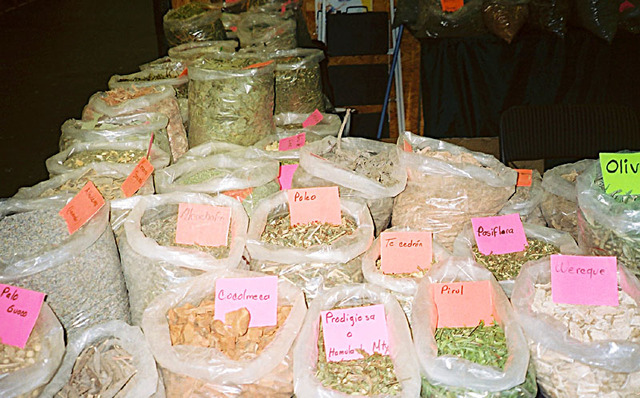
Señoras in alternative medicine
A señora is a female who is talented in the art of card reading. Because she reads cards in order to predict the future, she works on the material level (cards) as well as the mental level (predictions or being able to see past events). “Unlike the stereotyped gypsy fortuneteller, these señoras make predictions, normally in three areas: health, home life, and social condition (including legal and business matters)” (Totter and Chavira 57). Some señoras use the forty-card Mexican deck with figures of coins, swords, and cups. Some use the standard fifty-two card deck and others use standard tarot cards.
Each card has a particular meaning but combinations of cards are also important to the señora in being able to predict and to tell what has happened in the past. The client is often asked such information as full name and date of birth as well as to place the hand on the deck and to make two wishes: one to be revealed later in the session and the other not to be revealed but it will come to light later in the reading. There are usually no prayers involved but there are pictures of saints present as well as candles.
There are several señoras in Amarillo. One specializes in matters of the heart and was quite accurate in describing past occurrences using tarot cards.
Homeopatas
In Amarillo, there is one person who is a specialist in homeopathy. “Homeopathy is a form of alternative medicine, first proposed by German Physician Samuel Hahnemann in 1796, that attempts to treat patients with heavily diluted preparations which are claimed to cause effects similar to the symptoms presented. Homeopathic remedies are prepared by serial dilution with shaking by forceful striking, which homeopaths term “succession, after each dilution under the assumption that this increases the effect of the treatment” (Wikipedia).
The specialist does not charge for the services rendered but will accept donations. People know of this service by word of mouth. People of all ages consult with the healer but the large majority is less than forty years old.
Most common remedies recommended by the specialist include cabbage, gazpacho, red tomato and coconut, all being reduced to their liquid form before consumption.
Hueseros in alternative medicine
Bone setting is a lost art and is not practiced in Amarillo. The function of the hueserohas been taken over by modern medicine and in some cases by chiropractic practice or by sobadores, which will be discussed in another section. Hueseros still exist in villages in rural Mexico and their primary function is to set bones and deal with muscle sprains and pulls in the absence of traditional medical care and of a doctor.
Alternative medicine, up close and personal
For years, I have taken the drug Librax to combat a chronic stomach condition. Several months ago, I began to drink a series of herbal teas, consisting of hierba buena (mint tea), manzanilla (chamomile) and canela (cinnamon). The herbs were purchased at a local yerbería and the herbalist there instructed me on how to prepare the tea and the dosage (usually three times a day).
Result: I no longer use Librax to ease the uncomfortable symptoms that occurred before.
For months, I had been plagued with an inflamed left shoulder, so that, when placing the arm across my body (for example reaching with the left hand into the right inside pocket of a sport coat) it would produce sharp, agonizing pain that would last for at least five minutes.
I obtained the service of a sobadora and was given a series of sobadas focusing on the body and inner spirit as well as a special attention on the left shoulder. On several occasions, a heat-producing herb was placed on the forehead and sideburn area and then the ears were covered by the healer’s hands. This was said to form a canal so that males (bad or negative thoughts) could pass from inside of the body into the healer’s hands. Then, a series of rags were heated in a skillet, and a layer of bee’s wax and a layer of camphor were placed over the affected shoulder. A cool rag was then placed over the bee’s wax and camphor. Then, the hot rags were taken from the skillet and one by one placed on the shoulder. The heat was intense and remained hot for about twenty minutes. Another treatment was given with a series of kneading and pulling the shoulder between the treatments.
Result: The shoulder remains somewhat sensitive. However, the sharp pains that lasted five minutes or so and used to occur two to four times a week have been reduced to once or twice a month.
I fell in love with a married woman who had no exit strategy from her husband. In exchange for my loyalty, love, and giving her my heart, I received in return deceit and infidelity along with a liberal dose of hypocrisy. After two years and no attempt to end the marriage, I realized that morally and ethically speaking, I was not with a good person and ended the relationship. Nevertheless, for months I had feelings of failure, lament and most of all self blame for having become involved in such a tawdry situation. Traditional counseling failed and I turned to non-traditional methods.
The decision was made to consult with a healer who was an expert in treating susto or the more serious form found in Mexico, susto meco. Susto can be caused by a trauma or bad experience in the past. Symptoms are loss of appetite, weight loss and an empty feeling in the stomach. The healer first checked my wrist to see if the pulse rate had moved and was located higher up on the wrist than it is normally found. He then asked a series of questions regarding feelings and religious beliefs. He then gave me his opinion of the situation and placed one hand on my forehead and the other hand on the rear of the head. He began to pray and several times during the prayer asked me to repeat the words ahí voy (I’m going) several times and later told me this was a prayer for the spirit to return to body. At the end of the session, he told me I was in control of the situation and that I could end the negative feelings whenever I wished.
A month or so later, I received a limpia or cleansing of the negative forces and feelings that were inside of me. The healer first had me wash my hands in agua preparada (a specially prepared water used in rituals) and then rubbed a type of oil all over my hands and forearms. She then produced an egg and began to rub the egg all over my hands and forearms in a circular motion. This continued for several minutes while she prayed silently. She then instructed me to take the egg and continue with one hand, lightly rubbing the egg and alternating hands. She then instructed me to take the egg and to continue rubbing it and to take it out the front door and slowly to walk to the rear of the parking lot where there was a large industrial trash bin. She told me to quickly put the egg in the bin, close the cover, and admonished me not to be alarmed if I were to hear strange noises. I returned to the building, and she lit several pieces of incense and requested that I wash my hands in the smoke coming from the incense sticks, and she again prayed. She then had me do three complete turns and she sprayed me with a cinnamon base aerosol spray. With one more prayer for the healing to accompany me and the advice that the negative forces would not leave overnight but little by little, the limpia was concluded.
Result: The negative feelings and self blame have subsided. Did they go away because of the limpia and susto treatment? I truly don’t know. What I do know is that the negative feelings began to fade, little by little, and, I like to think that maybe the negative aspects of that relationship were left in the trash bin behind the botica on Amarillo Boulevard, exactly where they belong.
Alternative medicine: the Mexican connection
There are considered to have been three great curanderos. All three were born in Mexico but spent time in the United States, especially in the Southwest. It could be successfully argued that folk healing of today as it exists in Amarillo, or curanderismo, is at the very least a spinoff of one or more of these three famous folk healers.
These three famous Mexican curanderos, even in death, are revered over all parts of the Southwest. They still have a great following, especially El Niño Fidencio, on both sides of the border.
When I was doing interviews for this work, every person I spoke was familiar with at least one of the great curanderos. Some admitted using some of the same cures in their practice as the three famous healers.
Another link with Mexico is that all the interviews I conducted and all the people I had conversations with regarding this practice were from Mexico or were Mexican Americans. I encountered no other nationalities while doing this research. I interviewed and conversed with individuals from Monterrey, the Federal District, Jalisco, Sinaloa, Michoacan, Durango, Chihuahua, Tamaulipas, Chiapas, Sonora and Veracruz.
Don Pedro Jaramillo
When author James Michener was researching his book on Texas, one of the first things he did was visit the burial site of Don Pedro Jaramillo. Most historians would agree that don Pedrito is the most famous curandero of all time. In fact, some seventy years after don Pedrito’s death, Texas Monthly magazine called him “one of the most powerful men in South Texas” (Torres 35).
Don Pedrito was born in 1829 in Mexico. Almost nothing is known of his childhood. When he was fifty-two years old, he came to Falfurrias, Texas. According to legend, don Pedrito fell from a horse and first learned of his don, or healing gift, when he healed himself. He cured himself by using a liberal dose of mud on his nose and when he began to cure others, the use of mud continued.
He is known for some unorthodox methods of curing! And it would appear that don Pedrito had a wonderful sense of humor. One woman was to dip her head in a bucket of water before retiring, and then, in the morning, put half a can of tomatoes into each shoe! “Indeed there are even cures requiring that his patients consume large amounts of alcohol” (Torres, 38)!
Don Pedrito did most of his healing close to Falfurrias, Texas on his ranch called Los Olmos (the elms). He was reported to have seen on many days well over one hundred patients and like almost all true curanderos, never required payment for his services. He died in 1907 and on his tombstone is written “The Benefactor of Humanity.”
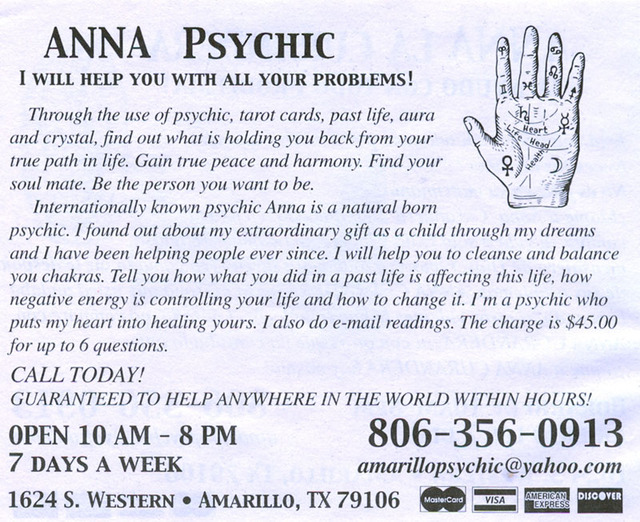
El Niño Fidencio
El Niño was born in 1898 in Guanajuato and is said to have begun to cure at the age of eight. In 1925, he moved to Espinazo where to this day followers of El Niño gather in March and October to commemorate his birth and his death. El Niño is rumored to have used merriment and laughter as the base of many of his cures. He is so revered among his followers that he is called the curandero of curanderos.
He has a large following both in the United States and Mexico. His followers are called materias and dress in white shirts and red kerchiefs. They, when healing, go into a trance and are said to assume the identity of El Niño while they cure. There are large groups of followers of El Niño not only in Texas and Western states, but also in large Northern cities such as Chicago.
His death is shrouded in controversy. Some say his throat was cut while in a trance. Others say that he died of natural causes. But, it is certain that he died at a very young age. One source cites his age at death at 33 and another at 40.
Teresita
Teresa Urrea was born in the state of Sinaloa in 1873. She was the daughter of a fourteen year old Indian peasant and Don Tomas Urrea, a successful hacendado. The family lived on don Tomas’ large ranch at Cabora. Teresita became attached to Huila, the hacienda’s curandera and bonesetter. Huila quickly realized Teresita had the don — or gift from God to heal — that all successful healers possess. She commented scarcely above a whisper, “Teresita, you have something I do not have (Holden).” After Huila’s death, Teresita assumed the role of healer and also was given the title of La Santa de Cabora. A reporter described Teresita in the following way: “Loveliness rather than beauty. What she has transcends beauty. It is something that projects. Projects and disarms… a warmth, a glow, eagerness and sincerity, a magnetism. Eyes that inspire confidence and faith, that probe and hypnotize. An arresting and remarkable woman. With the unconscious talent of a great actress, she establishes a spellbinding rapport with her audience. It is clear why believers find her irresistible. She tells them to walk and they walk. But for all her saintliness and good works she is still a woman….”(Torres 48)
Teresita was constantly at odds with the Church and Mexico’s president, Porfirio Diaz. One priest, Father Manual Gastelum, often spoke out against her from the pulpit and doubted her power to go into a trance. “This same priest had once crudely ordered that Teresita in her trance state be tested. What he’d done was approach two nuns, extracting a hatpin from the headpiece of one, and asking that she (the nun) use it to pierce the flesh of Teresita’s leg. If she were indeed in a trance, the priest reasoned, she would not be injured, and, if not, it would be better that the fraud be exposed. Under orders, the nuns went to Teresita’s bedside and did what the priest had described. The pin went in one side of Teresita’s calf and out the other without bleeding and, evidently, without inflicting pain since Teresita didn’t stir from her trance state. When she finally awakened of her own accord, she plucked the pin from her leg as if it were a minor irritant and told them to take it back to their priest (Torres 49).
President Diaz, who disliked Teresita’s popularity with the Yaqui Indians, ordered her exiled to Nogales, Arizona along with her father, don Tomas. They later moved further inland to Clifton, Arizona; and spent time in El Paso, Texas; New York; and in San Francisco, California, where she continued to treat patients and saw on some occasions, upwards of two-hundred patients a day.
Teresita died in 1906 and is buried in Clifton, Arizona next to her father.
Conclusion
Non-traditional medicine, faith healing, or curanderismo can fill a huge void left between modern traditional medicine and the option of receiving no medical treatment. Thousands of people in the Amarillo area for a number of different reasons, are not able — either by choice or for economic reasons — to enter into the established medical system. This void appears to be growing larger when coupled with the rising cost of medical care and prescriptions as well as the unemployment situation. The new health care plan may very well further increase the demand for non-traditional services.
Faith healing can be linked to traditional medicine and, in some cases, they go hand in hand, now that some areas of traditional medicine recognize the value of spiritual healing and herbal or “green medicine.” This is becoming more clear as we see an increase in holistic medicine. Holistic medicine can be defined as non-prescription medicine (Hudson) and takes into account the spiritual healing process as well as the physical.
Alternative forms of medicine offer some advantages that appeal to a great number of people and are sometimes, if not almost always, lost in the traditional setting. Most non-traditional practices take place in the patient’s home and not in the sterile environment of a doctor’s office or a hospital. A curandero, yerbero, señora, or sobador will always focus 100% of efforts on the patient. This does not occur with most traditional services. These non-traditional healers provide a counseling service for their patients. Another factor of extreme importance is the relationship that exists between the patient and the healer. It is personal, they are probably friends and neighbors, and a trust bond has already been established. And most importantly, “it does not isolate, as modern science tends to; rather, it embraces. And like an embrace, it shelters and warms (Torres 58).
From the author
This work would have been impossible if not for the assistance and help of a lot of people. There are several individuals who went “above and beyond” to render aid and guidance in one form or the other.
I expected some resistance to my questions and in dealing with what I considered to be a delicate topic. However, I encountered nothing but willingness to assist and openness from all persons I had the pleasure to meet along the way.
The beautiful aspects of doing this paper are the wonderful new friendships I made and having my mind opened to such a fascinating and engaging topic. Also, existing friendships with colleagues were fortified. It was a wonderful, positive experience.
This work is somewhat unique because I am non-Hispanic. Most books and articles I have read dealing with curanderismo have been written by Hispanics. I do speak Spanish, but it is not my first language. It is also unique because I have actively participated in some of the practices.
I hope this article is as enjoyable for you to read as it was for me to research and write.
John G. Gladstein
Works Cited
- Holden, William Curry. Teresita. Stemer house. 1978.
- Hudson, Tonia R., Personal Interview. 2 April 2010.
- Torres, Elisio. The Folk Healer: The Mexican-American Tradition of Curanderismo. Nieves Press. Kingsville, Tx: 1983. Print.
- Trevino-Hernandez, Albert. Curanderos: They Heal the Sick with Prayers and Herbs. Hats Off Books. 2005. Print.
- Trotter, Robert II and Juan Antonio Chavira. Curanderismo: Mexican American Folk Healing. Athens: Georgia. 1981. Print.
- Vincent, Rebecca, Phone Interview. 31 March 2010.
- Wikipedia. https://en.wikipedia.org/wiki/Homeopathy. 19 February 2010.


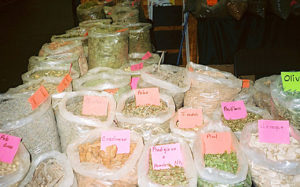
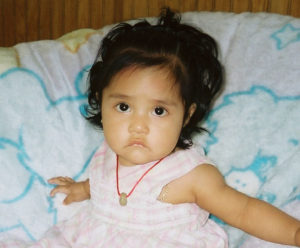
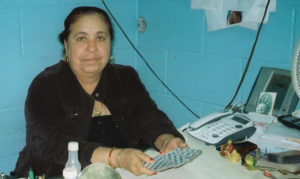
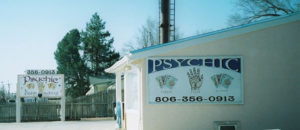

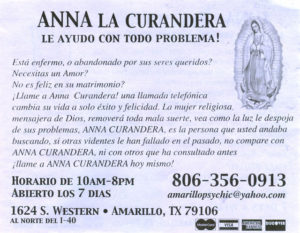
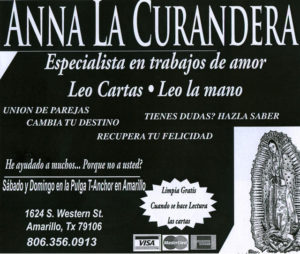
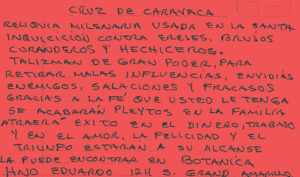
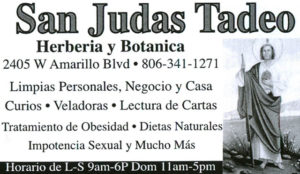
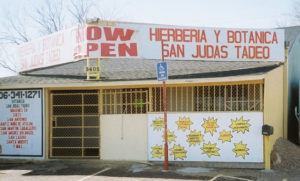
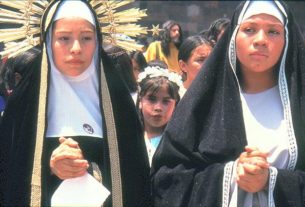
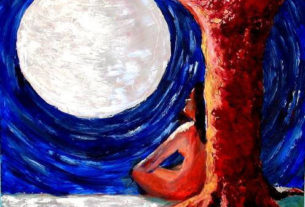
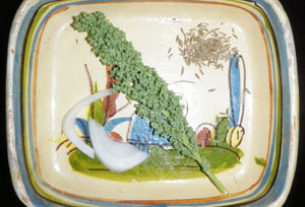
Dear website administrator,
Could you please give me John G. Gladstein’s contact info? I have cancer and desperately need to seek alternative treatments for help. Thank you.
Hi Teresa, John G. Gladstein’s contact info – which was available on our old site – was [email protected]. I can’t say if this is still current. Best wishes for a full and speedy recovery, Tony